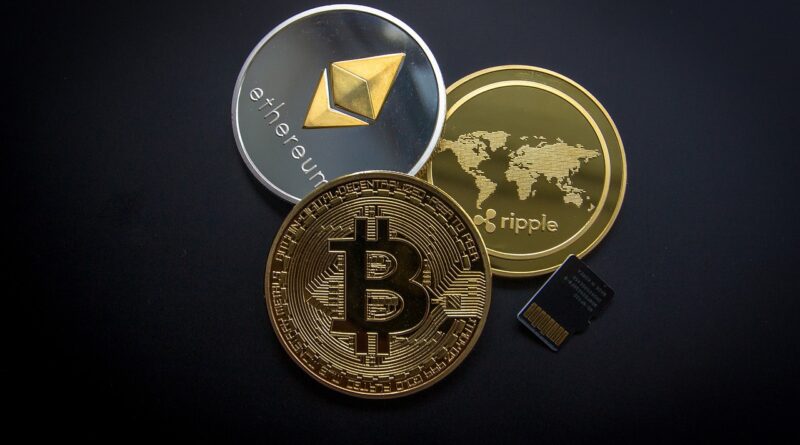Cryptocurrencies: What Are They?
Story Highlights:
- Bitcoin, Ethereum, Dogecoin, Solana, etc. are examples of cryptocurrencies, which are digital forms of money.
- All cryptocurrencies use a technology called blockchain
- Blockchain is like a spreadsheet where old information can’t be changed, and only accepts new information
- Hundreds of computer networks around the world validate blockchain transactions, using massive amounts of energy
- Cryptocurrencies can be more ‘trustworthy’ than traditional banking, but the individual owners assume all the risk
- The US government is trying to control cryptocurrency trading, and has also created its own national digital currency
- Trading in crypto is one of the most volatile investments available with inherently wild price swings
Overview
Think of cryptocurrencies as foreign money that you can buy, hoping it’s value goes up. Think of NFTs (Non-fungible tokens) as buying the rights to something that exists only on a computer or on the Internet.
Though the terms “cryptocurrencies (crypto)”, “Bitcoin”, “NFT”, “Dogecoin” and the like are all related terms, there is one word that unites them all… BLOCKCHAIN
Blockchain technology is what makes the crypto world go around, and without blockchain, every crypto and NFT would be completely worthless.
So what is blockchain and/or crypto, and why should you care? The reasons and concepts are quite simple, though the details are extensive! Keep reading for a good introduction.
Explaining Blockchain
Blockchain is the backbone of the new way of global computing by eliminating the need to ‘trust’ anyone.
Think of blockchain as a standard Excel spreadsheet. Each cell of data is entered and helps to calculate totals with other cells of data. Subtotals and totals can be calculated from all the data therein. The main difference between a spreadsheet and blockchain is that the data in the blockchain can’t be changed. In a regular spreadsheet, you can go back and modify the cells that were entered into sometime in the past. You can’t do this with blockchains.
For example: Let’s say that in data cell E76, there’s an entry that says Julie deposited 500 dollars. In a blockchain spreadsheet, once that entry is committed, it’s permanent. So you might then ask, “Wait a second, someone can access that spreadsheet and change that data, right?” The answer is, if there’s only one spreadsheet on a server somewhere, you would be correct. And essentially, when you have your money in a single bank, you are trusting that no one in the bank is going to change any of your numbers. Of course there are other checks and balances in banks that helps to validate changes in accounts, but it is all central to that bank.
Introducing Decentralized Ledgers
The main difference between traditional banking and blockchain is how it utilizes the power of the Internet. Now, let’s take the spreadsheet mentioned above with everyone’s deposits (including Julie’s $500 in cell E76), and distribute that spreadsheet to a huge network of independent computers across the world. ALL, and I mean all, of the computers that are validating the spreadsheet have to agree on the information contained within. If one person tries to change a record that was made in the past, it is immediately flagged as false information by all the other peer computers validating the blockchain spreadsheet. These validators are paid to verify the data. This is how they protect the data. They all have to agree. In this manner, new transactions can be added sequentially after the old transactions, and the ‘trust’ is completely rock solid because it has been verified by hundreds of independent validators around the world.
Better than banking?
In the above paragraph, you should immediately feel that blockchain is better than trusting one financial institution. Though this may be a valid notion, there are caveats:
- If each new transaction has to go back and make sure that past ones are valid before recording, this can take some time.
- Validating past transactions through all the peer computers across the internet can use a massive amount of energy.
- Having money and transactions validated in a decentralized network means that you are solely responsible for the transactions. There’s no customer service hotline.
- At current estimates, the amount of energy needed to validate one Bitcoin transaction across all the peer computers is equivalent to weeks of electricity use of one American household. Yeah, it’s a LOT of energy to validate blockchains.
The Future of blockchain and cryptocurrencies
This article is merely a brief overview of how cryptocurrencies like Bitcoin operate. Essentially, Bitcoin’s value is in its immutable transaction record. It simply cannot be cheated, so everything is true and valid.
Blockchain is learning how to significantly trim its energy use so that it can be viable for multiple industries. Think for a moment about using blockchain for the healthcare system. Moving health records to a blockchain system would completely revolutionize the system as all the data for one person would be unchangeable and fully intact. And since blockchains can keep information anonymous and only reveal the identity of the data to a person who holds special digital keys. This would easily put our information into our hands to share as we decide. With this kind of power comes a lot of responsibility. Suffice to say that for better or worse, blockchain is here to stay and will become more prevalent and pervasive in society.
Should I invest in cryptocurrencies?
This is the ultimate question that people want to know. Should I go out and buy some Bitcoin, or one of the hundreds of other crypto coins out there? Well, if you don’t mind investing in something that is about as wild as a roller coaster, full of thrills and fear, then by all means go ahead. After investing and speculating on crypto for over three years, I can say that I only know a fraction of what there is to know. Cryptocurrency, and all other blockchain items like NFTs, have the highest risk of all investments out there. Yes, you can make some nice returns on the investment, but you have to be very knowledgeable to do so. If you have money that you could essentially flush down the drain, then you are ready to invest in crypto.
The easiest and most simple way I found is to open a Robinhood brokerage account and buy and sell cryptos there. Be be careful, you may find yourself spending more time watching the price fluctuations than surfing social media!




